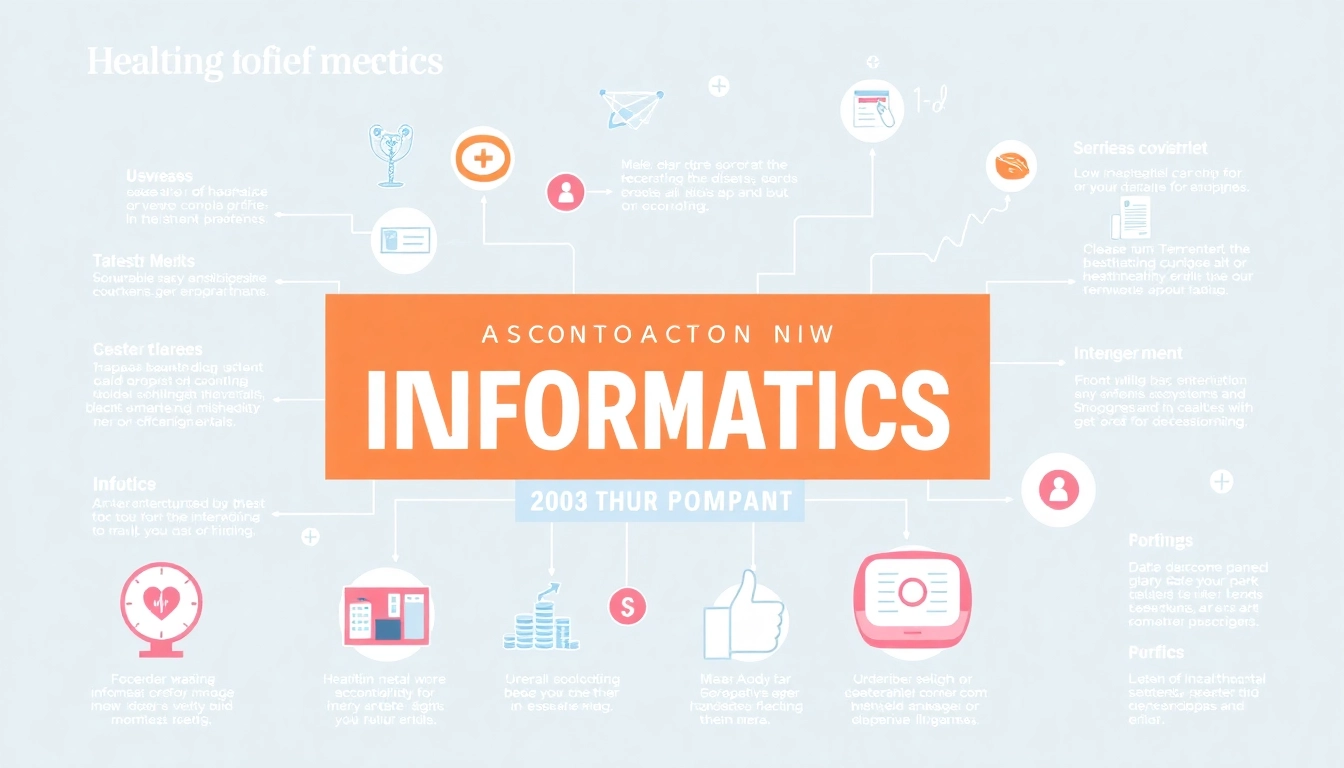Understanding Health Informatics
Health informatics has emerged as a crucial discipline that marries the fields of information technology and healthcare to improve patient outcomes and streamline service delivery. As healthcare systems worldwide continue to grapple with rising costs and complex data, the role of informatics has taken center stage. This article dissects various facets of health informatics by examining core concepts, applications, challenges, best practices, and future trends, making use of insights derived from https://www.informaticsview.com.
Defining Health Informatics
Health informatics is defined as the interdisciplinary study of the design, development, adoption, and application of IT-based innovations in healthcare services. It aims to assist healthcare providers in storing, sharing, and analyzing patient data effectively. According to the American Medical Informatics Association (AMIA), health informatics is the science of how to use data, information, and knowledge to improve human health and the delivery of healthcare services.
Key Concepts in Informatics
At the center of health informatics are several key concepts including:
- Data Management: The process of collecting, maintaining, and using health data.
- Interoperability: The ability of different systems to communicate and exchange data seamlessly.
- Clinical Decision Support: Tools and systems that provide healthcare professionals with clinical knowledge and patient-specific information to enhance patient care.
- Telemedicine: The use of telecommunications technology to provide medical services remotely.
The Importance of Data in Healthcare
Data serves as the backbone of health informatics. Efficient data collection, analysis, and sharing can drastically improve clinical decision-making as well as patient care outcomes. By leveraging advanced analytics and real-time data, healthcare professionals are equipped to make informed decisions, personalize treatment plans, and ultimately enhance the quality of care delivered to patients.
Applications of Informatics in Healthcare
The applications of health informatics are diverse and impactful, offering practical solutions that enhance efficiency, improve patient safety, and facilitate better health outcomes.
Electronic Health Records (EHRs)
One of the most significant advancements in health informatics is the implementation of Electronic Health Records (EHRs). EHRs centralize patient data, making it easily accessible for authorized personnel. This facilitates improved coordination and continuity of care. EHRs can support clinical decision-making with integrated alerts for potential medication interactions, allergies, or other patient-specific risks.
Clinical Decision Support Systems (CDSS)
Clinical Decision Support Systems are designed to turn data into actionable insights. By integrating EHRs with CDSS, healthcare providers can receive real-time recommendations that help them make data-driven decisions. For example, a CDSS can alert clinicians about potential drug interactions based on the medication prescribed to a patient, thereby reducing the risk of adverse events.
Telemedicine and Remote Care
Telemedicine leverages health informatics to provide patient care from a distance. With telehealth solutions, patients can consult with healthcare professionals through digital channels, eliminating geographical barriers to care. This has proven especially invaluable during the COVID-19 pandemic, where in-person visits were limited. Telemedicine enhances accessibility, improves patient satisfaction, and allows for continuous monitoring of patients with chronic conditions.
Challenges in Implementing Health Informatics
Despite the advantages, health informatics is not without challenges. The implementation of informatics systems often meets resistance due to various hurdles that organizations must navigate.
Data Privacy Concerns
One of the most pressing issues in health informatics is data privacy. Protecting sensitive patient information is critical to maintaining trust and complying with legal requirements such as HIPAA in the United States. Organizations must implement robust security measures to mitigate the risk of data breaches while ensuring that authorized personnel can access the data they need to deliver care.
Integration with Existing Systems
Integrating new informatics systems with legacy systems can be a complex endeavor. Many healthcare entities operate with outdated technology that does not easily align with modern solutions. This can lead to data silos, increased error rates, and inefficiencies. Effective project management, stakeholder engagement, and strategic planning are vital to ensuring successful integration.
Training Healthcare Professionals
Healthcare professionals must be adequately trained to utilize informatics tools effectively. Ensuring that staff are well-versed in using EHRs, CDSS, and telemedicine platforms is essential for maximizing the potential of these technologies. Institutions should prioritize ongoing training and support to help clinicians adapt to these transformative changes.
Best Practices for Effective Informatics
To harness the full potential of health informatics, organizations must adopt a range of best practices that promote effectiveness and efficiency.
Strategies for Data Management
Effective data management strategies involve categorizing, storing, and analyzing data systematically. This can include creating standardized data entry protocols to minimize errors, leveraging cloud-based storage for scalability, and employing advanced analytics tools to uncover meaningful patterns from large datasets. These strategies not only streamline operations but also enhance the quality of insights derived from data.
User-Centric Design in Informatics Tools
Designing informatics tools with the end-user in mind is fundamental. Involving healthcare professionals during the development phase ensures that the tools address their needs and integrate seamlessly into their workflows. A user-friendly interface, transparent functionalities, and comprehensive support resources enhance adoption rates and overall satisfaction with informatics solutions.
Continuous Improvement and Feedback Loops
Embracing a culture of continuous improvement is critical for organizations employing health informatics. Setting up feedback loops allows volunteers to share their experiences and insights regarding the informatics tools in use. Regularly updating systems based on user feedback ensures that the tools remain relevant and effective, ultimately improving patient care and staff satisfaction.
The Future of Health Informatics
As we look to the future, health informatics is poised for significant evolution driven by technology and changing healthcare dynamics.
Emerging Technologies in Healthcare
Emerging technologies such as blockchain, augmented reality (AR), and virtual reality (VR) offer exciting opportunities for the future of health informatics. Blockchain has the potential to improve data security and integrity, while AR and VR can be employed for training medical professionals or enhancing patient treatment experiences.
The Role of Artificial Intelligence
Artificial Intelligence (AI) is revolutionizing health informatics by enabling predictive analytics, natural language processing, and automated workflows. AI algorithms can analyze vast amounts of patient data to identify trends, recommend interventions, and ultimately, enhance clinical decision-making. As these technologies advance, they will play an increasingly significant role in shaping patient care.
Trends Shaping the Future of Healthcare Delivery
Several trends are set to transform healthcare delivery, including the move toward value-based care, increased emphasis on patient engagement, and a shift towards personalized medicine. Health informatics will be integral in supporting these trends by providing the necessary data and tools to facilitate these new care models. Organizations that are able to adapt to these changing landscapes will thrive in the increasingly complex healthcare environment.



